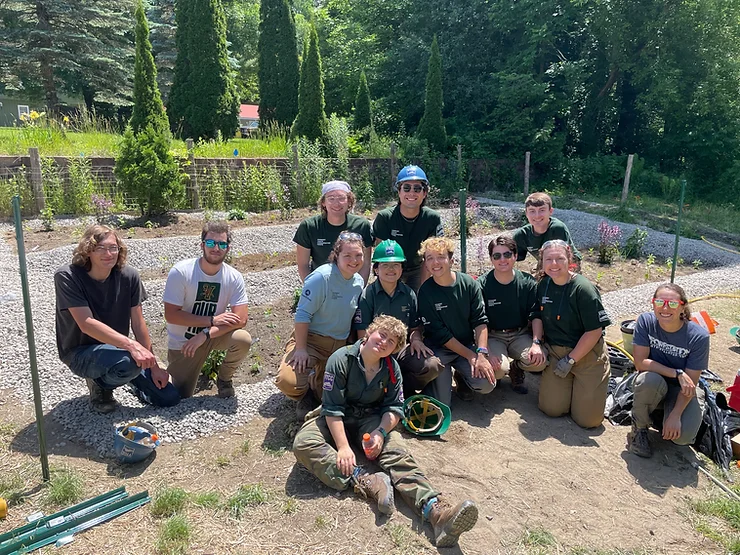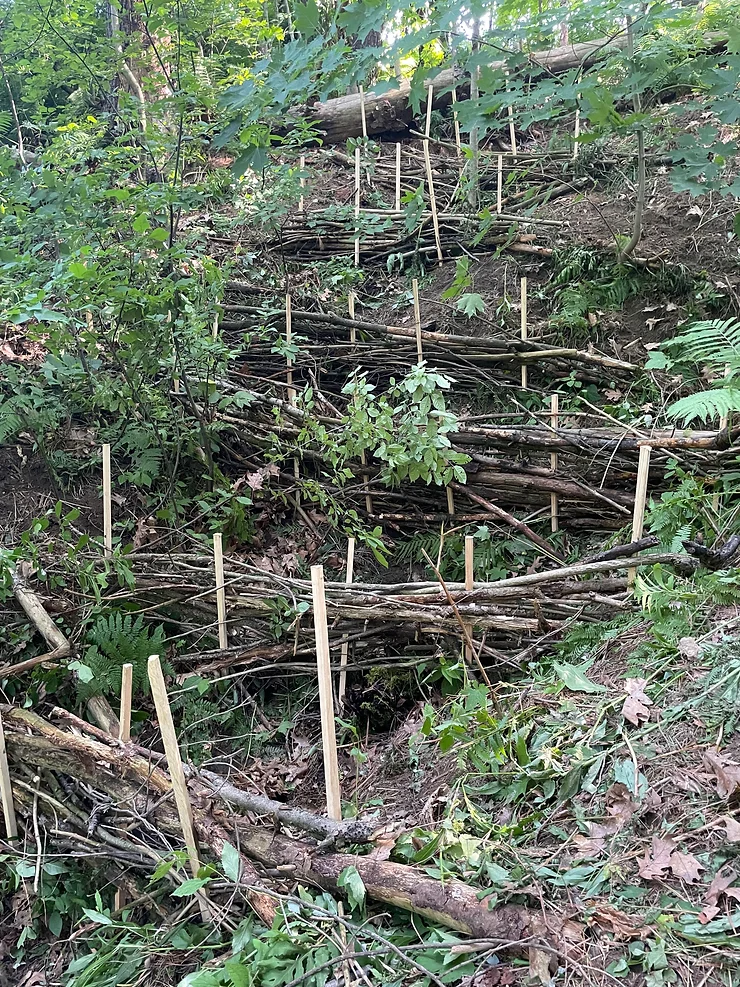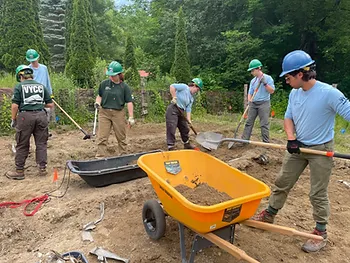In Highgate: a new rain garden, check dams, and 730 planted trees and shrubs reduce erosion into the Missisquoi River.
REPOST: District Completes Erosion Mitigation Project Protecting Missisquoi River Tributary
Written and published by Franklin County Natural Resources Conservation District
Original article available at https://www.franklincountynrcd.org
On Friday, June 23rd, the District wrapped up construction on a comprehensive project to improve water quality in a tributary to the Missisquoi River in Highgate. The landowners first contacted FCNRCD in 2022 with concerns about erosion on the forested slope behind their house posing a threat to water quality in the stream below, which flows into the Missisquoi River just a few hundred feet downstream.
The District collaborated with the landowners and partners at the Vermont Department of Environmental Conservation to design a project that would help mitigate gully erosion on the slope as well as reduce the amount of stormwater reaching the gullies from the residential land above. Fast-moving stormwater from roads, commercial development, and residential properties can cause erosion and transport soil into nearby streams and rivers, so it was important in this project to address the source of the stormwater in addition to mitigating the gullies.
The construction work, which included digging and planting a terraced rain garden, planting hundreds of trees and live stakes, and constructing check dams in the gullies, was completed by a Vermont Youth Conservation Corps Water Quality crew. Despite a hot, sunny week, the crew did an awesome job on their first project of the season! In total, they planted 730 plants and constructed check dams to restore 4896 cubic feet of gully erosion.

To mitigate gully erosion on the forested hill, the crew built a series of check dams in the gullies out of wooden stakes and brush collected from the surrounding forest. The check dams are designed to slow the flow of water and trap sediment before it reaches the stream, over time allowing the gullies to naturally fill back in. The team also planted 300 shrub willow live stakes along the banks of the tributary and 60 shade-tolerant native shrubs in the forest understory around the check dams to provide additional slope stabilization and water filtration.


To reduce the amount of water reaching the gullies from above, the crew dug a 1,685 square foot terraced rain garden filled with over 260 native perennial plants in the yard above the slope to capture and sink water. Due to the slope of the land, a three-terrace design was used to most effectively slow and sink water. Rain gardens are bowl-shaped gardens that capture and absorb stormwater runoff, and can be a great option for residential landowners who want to reduce the amount of stormwater flowing off of their property. To learn more about how to design and plant a rain garden, check out the Rain Garden Manual for Vermont and Lake Champlain.